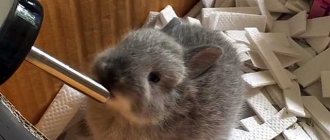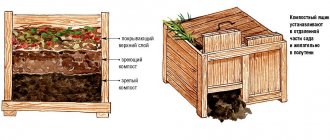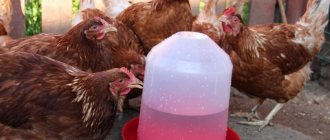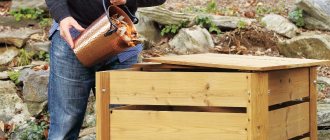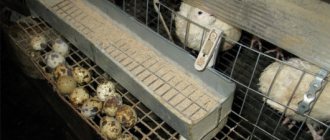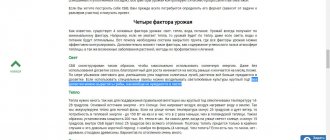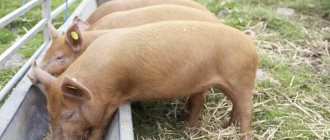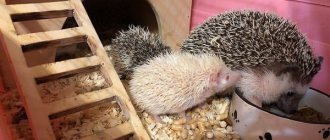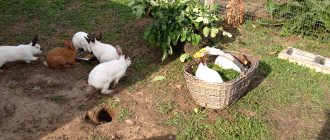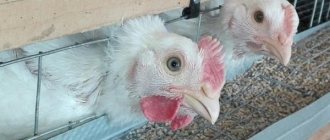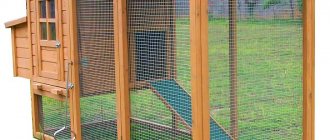Free access to clean and fresh water is the key to the health and good growth of animals. It is important to ensure the hygiene and safety of the water supply device. Dirty or stale water encourages the growth of bacteria and increases the risk of disease. And the inability to easily clean and disinfect the drinking bowl will aggravate the situation.
Modern automatic drinkers - nipple and cup - are much more convenient than traditional models. They are economical, very reliable, and hygienic, as they are made from corrosion-resistant alloys and do not allow water to splash. Pigs quickly get used to drinking bowls and use them willingly.
Sanitary requirements for drinking bowls
Constant access to water is an indispensable condition for raising pigs. However, the traditional village solution - a wooden trough - does not meet modern hygiene standards. The water here quickly becomes polluted, which significantly increases the risk of the emergence and transmission of diseases.
Drinkers for pigs must be reliable, durable, safe and meet the following requirements:
- free access to water - drinking bowls for pigs, young animals or newborn piglets are located at a certain height, taking into account the size of the animals. The latter should not have difficulty quenching their thirst;
- Availability of clean, fresh water – stagnant water, and especially dirty water, poses a threat to animal health. In addition, you need to take into account the temperature of the water. For piglets, for example, water containers are equipped with heating elements in order to provide the young animals with warm water in winter;
- uninterrupted water supply - an unacceptably long absence of water, this significantly slows down the growth of animals;
- tightness and safety of the water tank - the tanks are located in the pigsty, water leakage leads to large contamination of the premises and excessive dampness;
- strength - pigs, especially those not characterized by a peaceful disposition, quite often gnaw food containers, parts of fences and, of course, sawdust. The material of the products must be durable;
- the possibility of regular disinfection and washing of drinking bowls is an indispensable condition. Most often, solutions of hydrogen peroxide or chlorine bleach are used for cleaning. Special products are also produced for different systems - nipple, cup drinkers.
You can find out about the pig feeding chart here.
Drinkers for pigs must meet all sanitary standards
When sanitizing drinking bowls, the disinfectant is used in the maximum concentration suggested by the manufacturer. The system is then flushed with water.
To satisfy the above requirements, it is necessary to pay attention not only to the design and material of the drinker, but also to the water supply conditions. Compliance with the following recommendations allows you to comply with sanitary standards:
- The best material for the product is stainless steel. The alloy is inert, hygienic and does not accumulate bacteria. In addition, stainless steel is completely corrosion-resistant and very durable. Plastic drinkers, common in small pigsties, are short-lived and cannot withstand active use;
- a design with a filter is preferable: in this way it is easy to obtain clean and fresh water. Filters need to be changed or cleaned depending on their type. The timing of replacement or cleaning is determined by the load on the drinkers;
- A water tank with a pressure regulator is more economical to operate. In this way, you can reduce or increase the water pressure, and, in addition, flush the drinking system.
Materials for production
Before you make your choice of drinker type, you need to decide on the materials.
- Tree. Eco-friendly material, however, it gets dirty quickly, is difficult to disinfect and is prone to leaks.
- Plastic. The advantages of this material are accessibility and ease of construction. However, plastic drinking bowls for pigs quickly deteriorate: animals chew on them.
- Metal. Very durable and strong, but susceptible to rust. To use metal structures longer, you need to use stainless steel or material with an anti-corrosion coating for construction.
Wood, plastic or metal can be used to make drinking bowls.
Kinds
There are several types of this device. All structures can be made of stainless steel or other anti-corrosion alloys and differ in structure and cost. In large farms, such drinking bowls can be automated.
Vacuum
The simplest option, usually used when feeding. It is a reservoir like a bowl - this part is purchased, and a container with water. An ordinary glass jar can serve as the latter. Water is poured into a jar, covered with a bowl, then the resulting structure is turned over. The liquid partially flows into the bowl until it fills it. The water supply is then stopped as the pigs drink the water. The next portion of water flows into the bowl from the jar. Read how to feed pigs correctly here.
Such a device cannot be used to provide water to adults or even young animals, since it is very difficult to find a glass jar of appropriate capacity. Plastic is not suitable, as it is too light in weight.
The advantages of a vacuum drinker are as follows:
- this is the most economical option of all possible;
- water is visible, so animals quickly understand how to use the drinking bowl;
- Caring for the product is very simple; disinfection is carried out at any appropriate time.
The disadvantages of this option are:
- can only be used for feeding piglets;
- the liquid quickly becomes contaminated, so you need to clean the drinker often;
- the product is very light, animals often knock over drinking bowls, which leads to contamination of the room;
- It is not possible to install any filters, so the water has to be prepared additionally.
Vacuum drinkers are the most economical option, but do not have any water filtration
Nipple
Nipple or nipple drinkers are considered the most convenient and here's why:
- the design is suitable for animals of all ages, that is, as young animals grow, there is no need to install another device;
- hygienic - made of brass or stainless steel, and these alloys prevent the growth of bacteria;
- the design allows you to use water more economically;
- The nipple system is easy to clean and disinfect;
- This water supply system is very reliable, and it is also convenient to mix and give milk replacer to piglets.
The disadvantage of a nipple drinker is its high cost. However, with some experience, you can build such a structure with your own hands.
The device of the product is quite simple and includes:
- pacifier;
- valve - both the valve and the spring must be made of stainless steel or brass;
- fluid supply regulator;
- sealing rubber gasket;
- filter – preferably a mechanical mesh filter;
- metal body - can also be made of ordinary steel, but its resistance to corrosion is noticeably lower, and the drinker will have to be changed.
The drinking bowl works very simply: the animal presses the nipple, it activates the valve and water begins to flow under low pressure. As soon as the pressure disappears, the fluid supply stops. In this case, the water does not splash and does not flow wasted onto the floor of the pigsty. Since water supply and shutdown occurs automatically after pressing the valve, the nipple system is classified as an automatic drinker.
This link will tell you about pig farming at home.
As a rule, 2 days are enough for animals to get used to this method of quenching their thirst.
Cup
The device got its name from the presence of sides that form a kind of bowl around the water supply. Several design models of different sizes are produced - for very small piglets, for young animals, for older animals, the product also belongs to the category of automatic drinkers.
The main advantage of a cup drinker is that the water is visible. Animals become accustomed to using the device within a few hours.
Water supply, however, is not constant, but according to demand. Liquid enters the bowl through the valve. The rubber gasket is the valve seat and prevents water from flowing out of the pipe. Although there is always water in the pipe itself. When you press the mechanism, the valve lowers and water enters the resulting gap. The animal drinks it from the cup.
Animals quickly get used to drinking bowls of this type, because they constantly see water.
The advantages of this design are as follows:
- both piglets and adult pigs easily learn to use the drinking bowl;
- water does not splash on the sides - the sides prevent this, that is, excess dirt and dampness does not appear;
- The liquid is consumed sparingly, since water pours out only after pressing the valve.
However, this option has more disadvantages than the nipple option:
- There is usually some water left in the bowl. On the one hand, this attracts animals, but on the other, the liquid becomes contaminated very quickly, which is unacceptable;
- cup drinkers have to be cleaned several times a day;
- sanitization takes more time and effort, since it is necessary to wash not only the system of pipes and valves, but also the bowls themselves.
Read about drinking bowls for cows in this material.
Pig feeders
Since pigs are omnivores, a wide variety of food types are used to feed them, including food waste. To dispense feed, a trough must be placed in the holding pen. It is often installed at the front of the machine, near the door.
Troughs for pigs can be made from almost any materials available on the farm (Figure 1):
- Tree;
- Metal;
- Asbestos.
Figure 1. Drawings of feeders for pigs
Wooden troughs must be lined with sheet iron along the edges. The best are troughs made from asbestos-cement pipes. The pipe is simply sawed in half, and the edges are sewn up with boards of the appropriate size.
A detailed procedure for making a bunker feeder with your own hands is given in the video.
Key Features
The size and basic parameters of the food dispensing container play a key role in the successful raising of animals.
When choosing troughs for pigs, you need to consider some features:
- The sizes of containers for young animals and adults should be different. In addition, when keeping a large population, food containers must be conveniently installed so that all animals can freely approach the food.
- The material must be durable, but at the same time easy to clean and disinfect.
- It is better to make containers airtight so that animals cannot throw food around or contaminate it with bedding and manure.
How to do it yourself
It is not difficult to make an analogue of a trough for Vietnamese piglets, as for other breeds, from a steel pipe or a vacuum drinker. However, such products do not fully comply with sanitary standards. In fact, you can make a nipple system at home. True, such a detail as the nipple itself will still have to be purchased in the store.
When purchasing, you should pay attention to the size of the nipple. For piglets, a model with a weak nipple is suitable, young pigs will need a medium-sized nipple, and for adult pigs, a large nipple with a tight valve.
The procedure is as follows.
- According to the size of the nipple, a metal pipe with the appropriate diameter is selected - ordinary steel.
- A container is selected - usually a plastic barrel of the required volume. The latter is determined by the daily water requirement of the livestock.
- A piece of pipe is cut to such a length that animals can easily reach the drinking bowl. So, for piglets weighing less than 15 kg, the distance from the floor to the drinking bowl should be no more than 15 cm, and for young animals weighing more than 100 kg - 70 cm.
- A hole of the required diameter is made in the barrel. A nipple is installed in the pipe, and the pipe is secured into the hole. The nipple should be located at a slight angle: this will make it easier for the animal to drink, and less water will leak onto the floor.
- The joints are filled with sealant.
Operating principle of a cup drinker
Cleaning and processing of self-made drinkers is carried out in the same order as ready-made nipple systems.
conclusions
- Drinkers for pigs must meet sanitary standards. Otherwise, you cannot guarantee the health of the animals.
- For large farms, it is recommended to use automatic drinkers.
- Simple vacuum models can only provide water for 1–2 adult animals. The device can also be used when raising piglets.
- Drinking bowls should be periodically cleaned and always disinfected.
- No matter how modern and reliable the drinking bowl is, water for drinking by animals should be prepared: filtered, and sometimes heated.
Read about pig feeders in this article.
Water requirements of piglets
Water serves to transport nutrients into the animal's body. Additionally, it helps in regulating body temperature and removes toxins. If there is little drinking, feed intake decreases, which leads to a drop in performance.
During different periods of growth, piglets need different amounts of fluid. Under normal climatic conditions, animals require water that is at least twice as much as the food they eat. In hot weather, the amount of drinking increases. Pregnant and lactating sows begin to drink more than usual.
Pigs must be provided with a sufficient amount of high quality water. It should be taken into account that animals fed dry food drink more and more often than those fed moist.
The drink served must be safe. This means that when installing water supply mechanisms, it is necessary to provide a system for its purification and quality control at the outlet.
